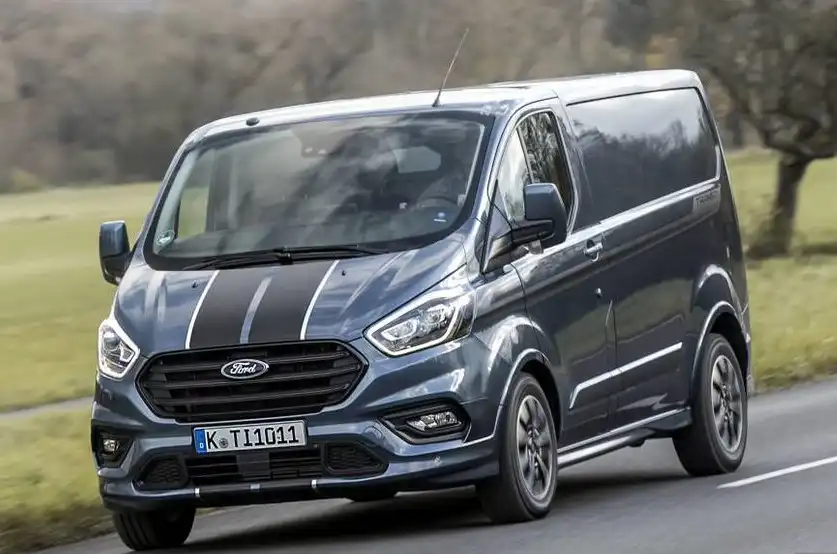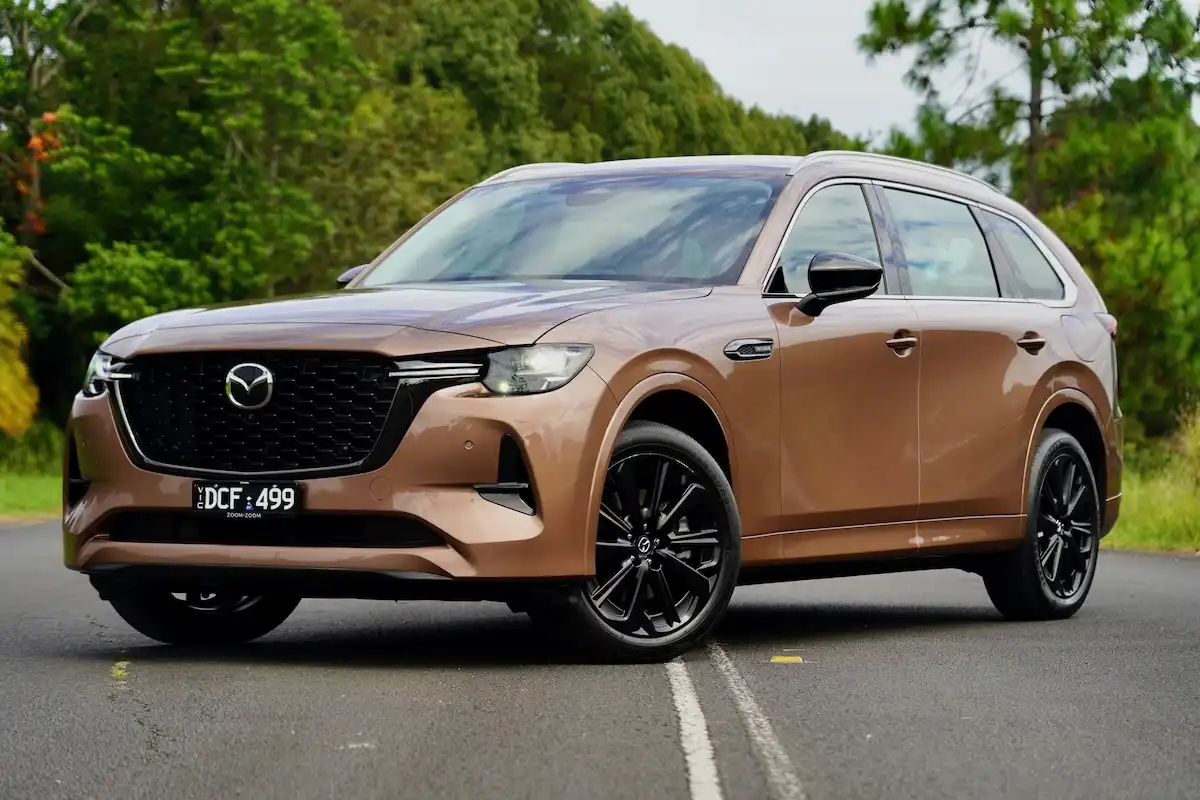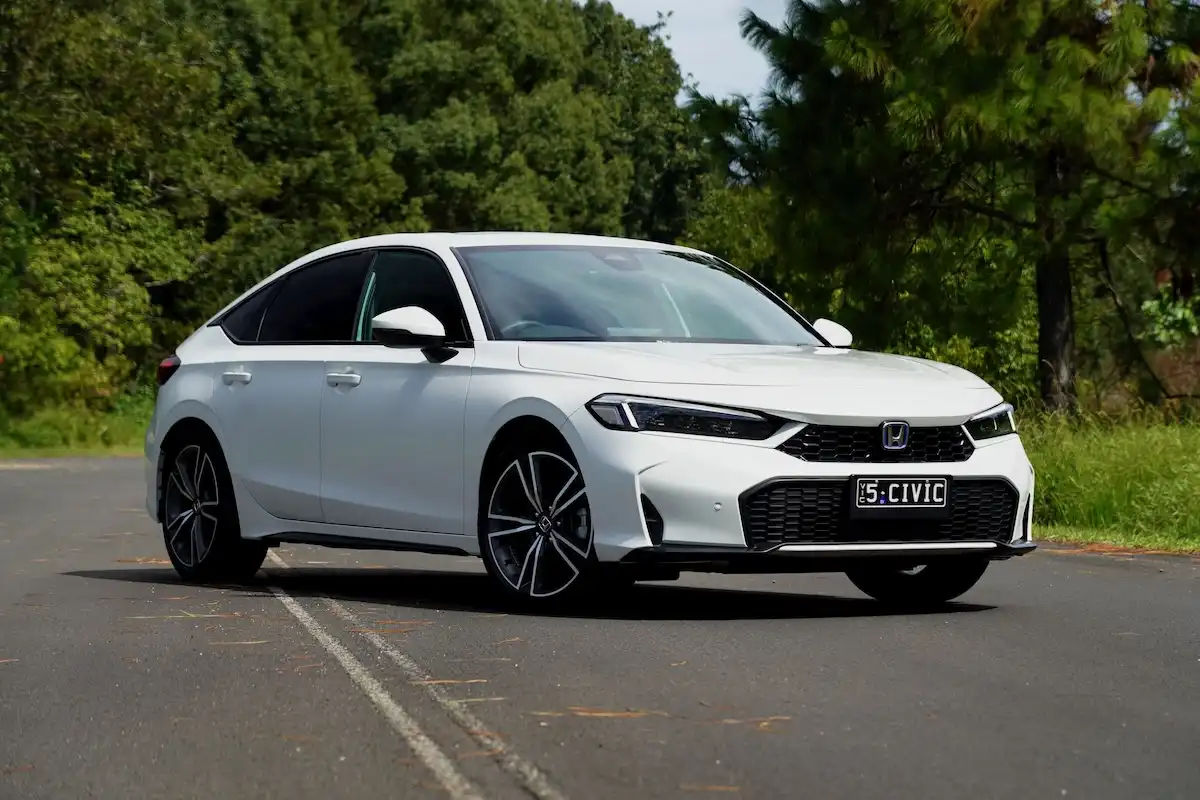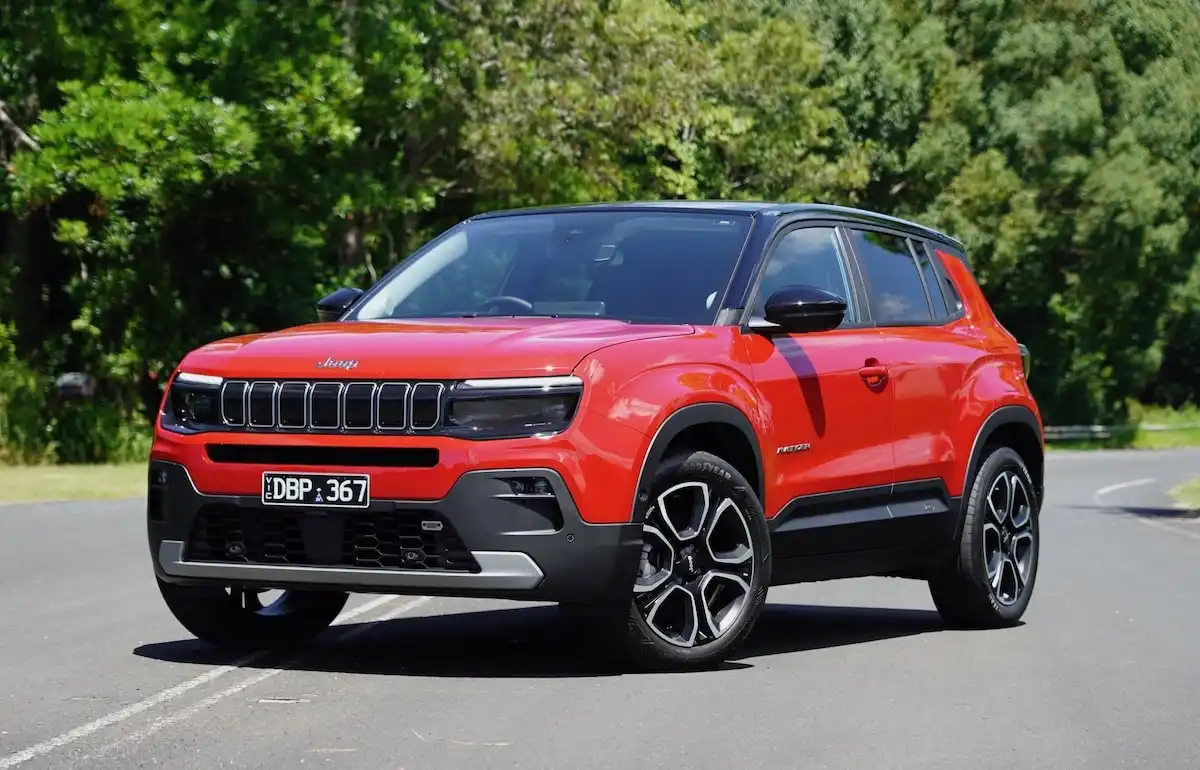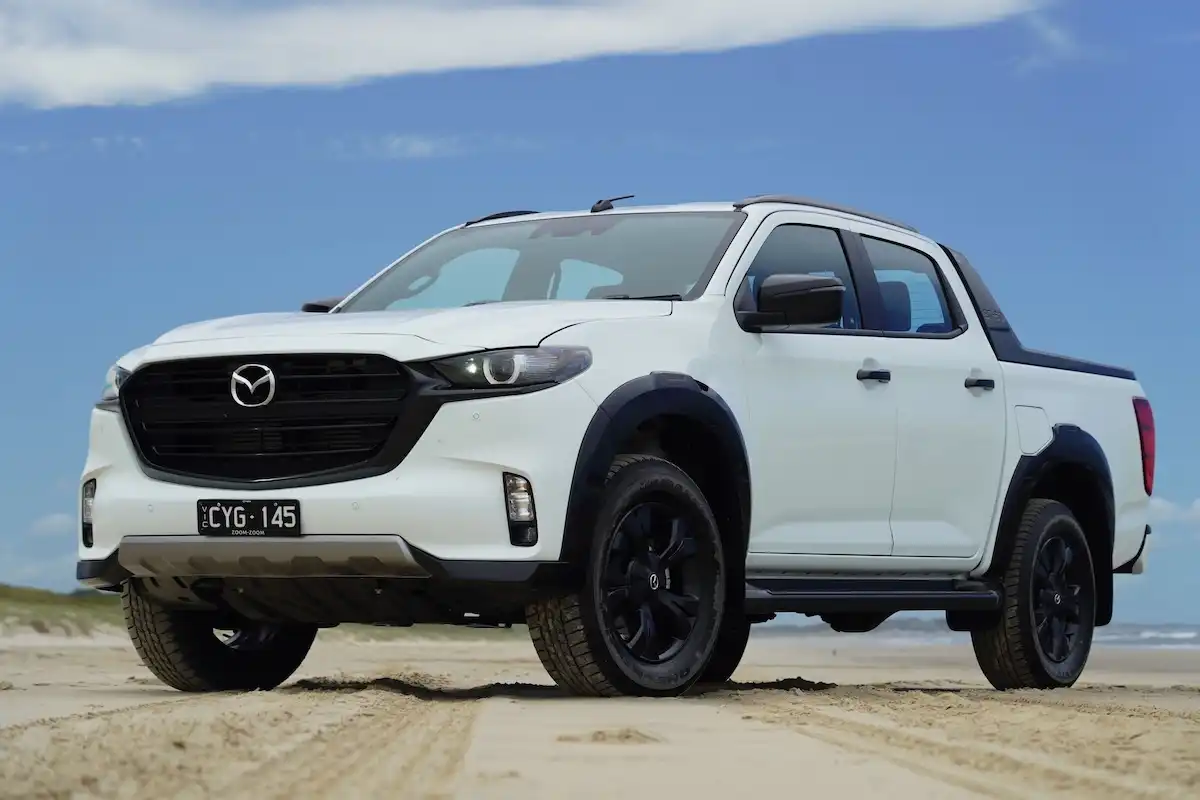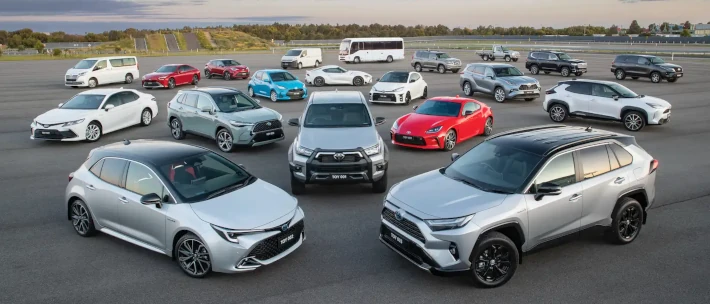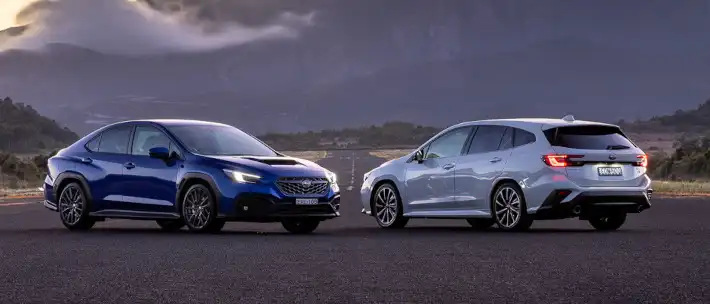In its latest generation, Ford has continued to refine its already-impressive Transit Custom recipe in a two-variant lineup that offers a standard and a sport offering in both short and long wheelbase configurations.
The main problem for the Transit, though, is that its competition is catching up fast, hoping to snatch buyers away from the fan-favourite Transit.
How well does the latest Transit hold up against its competitors? Let’s find out.
Starting Price: $44,090
OnlineAuto Savings: $6,257
Ford Transit Custom - 340S (SWB) Specifications
| Model Date | 2022 |
| Make | FORD |
| Model | TRANSIT CUSTOM |
| Series | VN MY21.75 |
| Variant | 340S (SWB) |
| Body | VAN |
| Fuel type | DIESEL |
| Transmission | 6 SP AUTOMATIC |
| Drive | FWD |
| Engine | TDDFI |
| Engine capacity | 1995 |
| Engine configuration | DUAL OVERHEAD CAM / 16 valves |
| Engine RPM | 3500 / 1500 |
| Cylinders | DT4 |
| Torque | 390 |
| KW | 125 |
| Fuel tank size | 72.0 |
| Fuel usage specs | 7.2 / 0 |
| CO2 | 186 |
| ANCAP security rating | 5 |
For more details and other variants, check Ford Transit Custom car page.
Need help narrowing down your choices?
Get in touch with one of our Car Buying Specialists today
Request a quoteHow Much Does It Cost?
The Ford Transit Custom lineup kicks off from $44,090 for the entry-level Transit Custom 340S short-wheelbase (SWB) with a manual transmission, while the 340L long-wheelbase (LWB) manual is priced at $46,090.
Stepping up to the automatic Transit Custom 340S and 340L brings the price to $46,890 and $48,890 respectively.
The range then moves to the Ford Transit Custom 320S Sport which is priced at $50,390 for the SWB variant, with the 340L LWB priced at $51,890. Finally, the range tops out in the form of the Transit Custom 320L Sport LWB which is priced at $55,390.
Keep in mind that these prices are subject to change and do not include on-road costs.
How Much Can OnlineAuto Save You?
Using OnlineAuto’s car buying service, you could save around $6,257 by sourcing one of our car specialists to help you find the best value model for you.
What Features Does the Ford Transit Custom Have?
The base Ford Transit Custom comes riding on a set of 15-inch steel wheels, and receives climate control, adaptive cruise control, a rear-view camera, digital instrument cluster, front and rear parking sensors, automatic halogen headlights, an 8.0-inch infotainment system powered by Ford’s Sync3 with Apple CarPlay & Android Auto which is paired with a four-speaker sound system atop a heap of safety equipment.
The range-topping Custom Sport comes riding on 17-inch alloys wrapped in Michelin rubber, and receives bi-Xenon LED headlights, a set of racing stripes with a black grille finish, part-leather sports seats & steering wheel, 10-way adjustable heated seats, sat-nav and a set of heated side mirrors and windscreen.
Range Features:
-
15-inch steel wheels
-
Adaptive cruise control
-
Rear-view camera
-
Front & rear parking sensors
-
Automatic halogen headlights
-
Digital instrument cluster
-
8.0-inch infotainment system with Apple CarPlay & Android Auto
-
17-inch alloys wrapped in Michelin tyres (Custom Sport)
-
bi-Xenon LED headlights (Custom Sport)
-
Sport body styling with stripes & black grille (Custom Sport)
-
Sport seats with part-leather upholstery & leather steering wheel (Custom Sport)
-
10-way adjustable heated seats (Custom Sport)
Ford Transit Custom Colours
The Ford Ranger is available in Frozen White as a no-cost colour option, while Moondust Silver, Magnetic Silver and Agate Black are priced as $650 extras, while the Transit Custom Sport is available with Blue Metallic and Orange Glow colour finishes for $650.
Is it Comfortable to Drive?
As you can imagine, after four generations and more than 8-million Transits sold, Ford has perfected the art of designing a user-friendly cargo van that remains tough at heart, surprisingly agile and comfortable on daily journeys.
Power for the standard Transit Custom range is supplied by a 2.0-litre four-cylinder turbo-diesel engine pushing out 125kW of power and 390Nm of torque, which sends power to the front wheels via a six-speed automatic transmission.
Upgrading to the Transit Custom Sport adds a revised version of the same 2.0-litre turbo-diesel that produces an additional 11kW of power and 15Nm of torque, bringing its combined output to 136kW of power and 405Nm of torque.
The added power and torque on offer from the Sport’s engine is a welcomed addition, but the performance of the standard engine will leave the majority of buyers more than happy with its acceleration and cargo-carrying abilities and silky-smooth transmission.
In terms of suspension, the Transit Custom comes ready for action with a tough package that can handle heavy loads, and makes for a comfortable unlaiden driving experience with surprisingly sharp handling for a commercial-focussed van.
Thankfully, the Transit also features a lightweight steering rack that makes parking and low-speed maneuvers easy as pie, making for a supremely user-friendly and comfortable driving experience for trips around town and long-distance trips alike.
Is the Cabin Practical and Spacious?
While the interior detailing might be showing some signs of an ageing platform, the Transit remains exceptionally comfortable and spacious, and features a heap of practical elements for work and family trips.
The front of the cabin offers the driver and front passengers a tonne of headroom that, combined with a large windscreen, adds to the sense of spaciousness inside the Transit’s three-abreast cabin.
In terms of storage, there’s a heap of space atop the dashboard for loose items, as well as a large glovebox, cup holders and storage in the door bins that make the Transit an impressively practical workhorse.
The interior design is well-appointed for the segment in the base model, while the Sport gains a heap of metallic contrasts, a set of sport seats and highlights that add to the interior design.
There’s also an option for a Transit Custom with a second row of seating, which offers a decent amount of legroom that is perfectly fine for tall adults, while there’s a heap of headroom, too. The second row features ISOFIX anchors on either side of the cabin to accommodate child seats.
Overall, the sense of space in the front of the cabin, combined with the well-appointed interior and ample storage options make the Transit a strong performer when it comes to space and practicality.
What are the Cargo Carrying Specs of the Ford Transit Custom?
Let’s start by taking a look at the Ford Transit Custom’s cargo space, which ranges from 1,944mm long in the Sport 320L through to 2,400mm in the Custom 340S, while the Custom 340L has a cargo tray measuring 2,767mm; all variants measure 1,775mm wide - 1,392mm between the wheel arches - and stand 1,406mm tall.
This translates to 5,700L (5.7m3) of cargo volume in the Custom 340S, which increases to 7,200L (7.2m3) in the 340S with the high-roof design, while the 340L long-wheelbase offers up to 6.6m3 of cargo volume, increasing to 8.2m3 in the high-roof variant.
Opting for the Transit Custom 320S Sport reduces cargo volume to 5.7m3.
Payload figures for the Transit Custom lineup range from 1,387kg in the 320S, decreasing to 1,330kg in the 340S long-wheelbase, and dropping to 969kg in the 320L Sport, making the base model the best option for sheer payload capacity.
Towing figures start at 2,800kg for the Custom LWB manual and drop to 2,000kg in the automatic, while the SWB are rated at 1,500kg and 2,000kg for the manual and automatic respectively, and the Transit Custom Sport is rated with a maximum braked towing capacity of 1,800kg.
Is it Safe?
Ford’s Transit Custom range has been awarded ANCAP’s maximum five-star safety rating, and receives a particularly healthy amount of safety equipment when you consider how it’s competitors come equipped.
The Transit’s safety list includes autonomous emergency braking with pedestrian detection, a rear-view camera with front and rear parking sensors, adaptive cruise control and airbags around the cabin, blind-spot monitoring, lane keep assistance and trailer-sway control and rear-cross traffic alerts.
This makes the Ford Transit one of the best vans in the segment in terms of safety equipment as standard.
Is it Fuel Efficient?
The entry-level Ford Transit Custom 340S and 340L return combined cycle fuel economy figures of 6.9L per 100km, making it a strong performer in the area of fuel efficiency.
Opting for the Transit Custom Sport increases the fuel economy to 7.3L per 100km, but offers a sizable power and torque increase in exchange for the added fuel use.
Our Verdict: Is the Ford Transit Custom Worth it?
Ford’s Transit range remains one of the kings of the segment from pretty much every angle you look.
In its latest generation, the Transit Custom range blends comfort, practicality, work-horse abilities and a generous safety equipment list that makes for one of the most compelling offerings within the commercial van segment.
With a heap of variety within the range, there’s a Transit Custom that is perfectly suited to your needs.
While the interior could no doubt use a refresh in the coming years, the Ford Transit is a difficult vehicle to fault, and as a result, we highly recommend you add it to your shortlist.
On that note, if you’re in the market for a new car, you can get a free quote and see how much OnlineAuto can save you on your next car, or call us on 1300 719 925
Five Specs You Need to Know
-
Five-year, unlimited KM warranty
-
Two configurations of turbo-diesel engine available
-
Five-star ANCAP safety rating
-
Fuel economy between 6.9 - 7.3L/100km
-
Cargo volume starts at 5.7m3; grows to 6.6m3 in long-wheelbase
Pros
-
Generous safety equipment list
-
Genuine workhorse abilities
-
Variety within the range for different needs
-
Powerful & relatively fuel-efficient turbo-diesel
Cons
-
Ageing interior design
-
Some variants drop towing capabilities
-
Rising pricetags
Ford Transit Custom Competition
Ford Transit Custom |
VS |
Toyota HiAce |
| Volkswagen Transporter | ||
| Renault Trafic | ||
| Mercedes-Benz Vito | ||
| Mitsubishi Express | ||
| Hyundai Staria Load |
